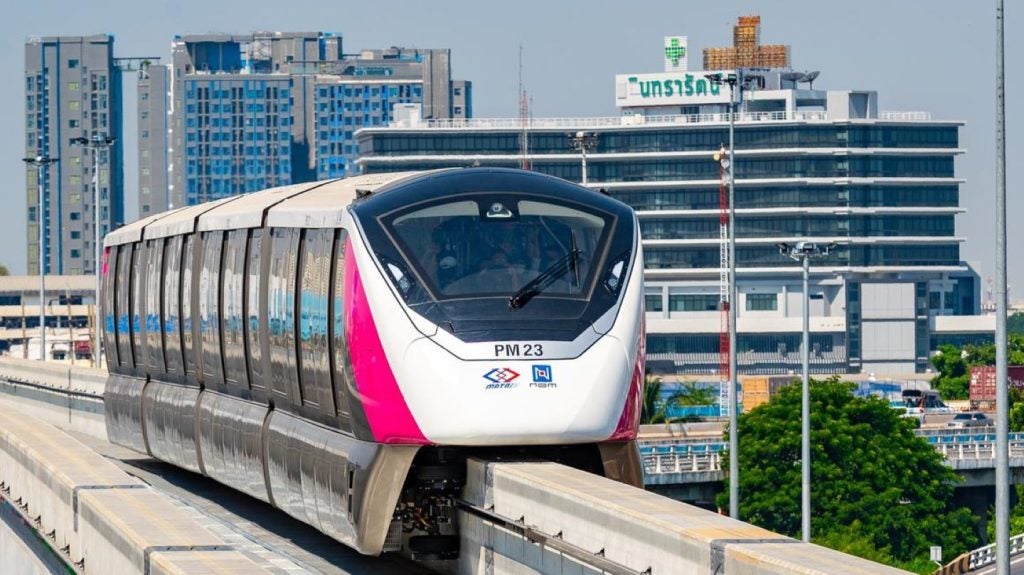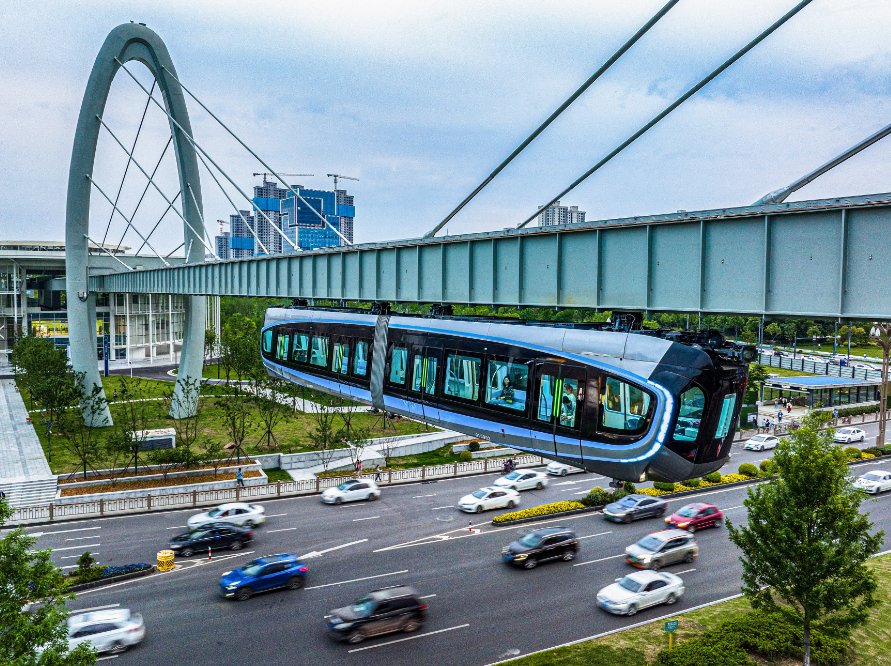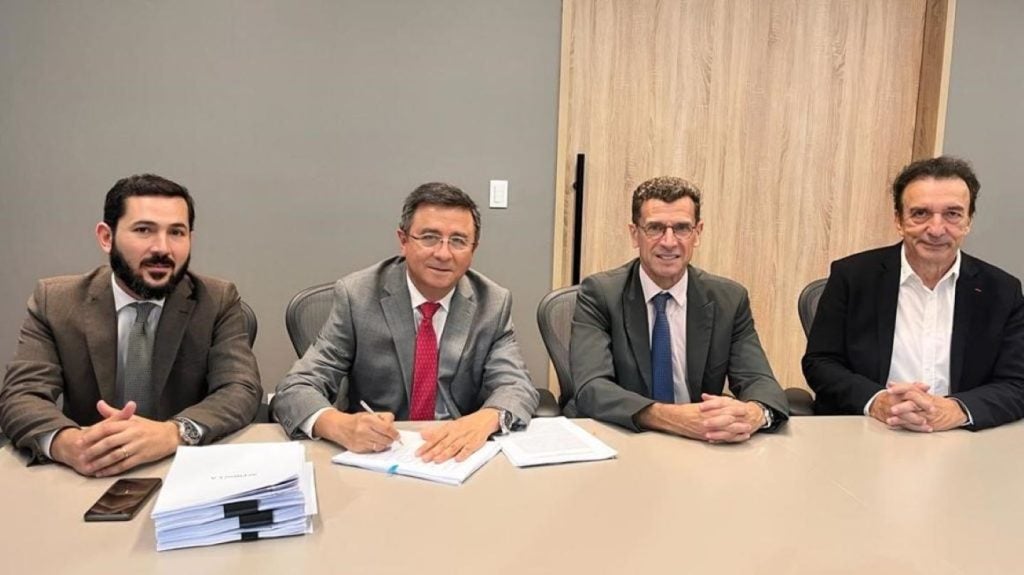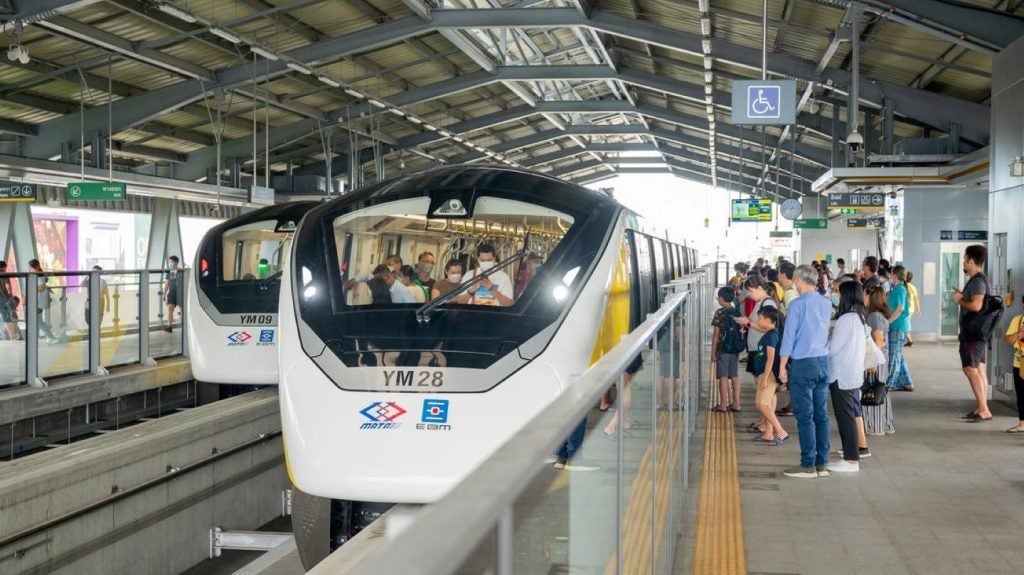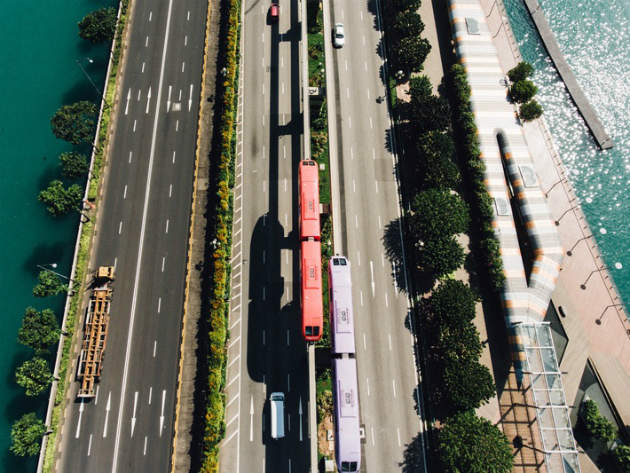
Attempts to popularise the monorail as a viable, everyday alternative to traditional railways have been made since the first part of the 19th century.
But, apart from a few restricted applications in airport transfer and big theme parks, monorails have been seen mostly as an impractical, eccentric fad.
In recent years, however, transport authorities across the world have been trying to challenge that view by incorporating short-distance monorail systems in some of their busiest districts to relieve congestion.
In the evening, commuters in cities such as Istanbul, Moscow, Lodz and Chongqing struggle with traffic congestion that adds 80% to 100% more time to their normal commute, according to TomTom Global Traffic Index.
The environmental impact is another factor. In 2011, a study by the Harvard School of Public Health (HSPH) found that air pollution from traffic congestion in 83 of the nation’s largest urban areas contributes to more than 2,200 premature deaths annually, costing the health system at least $18bn.
Cheaper than traditional rail systems, monorails are built above ground, which means they don’t take up precious street space; they are also less likely to disrupt ground transport during construction, while eliminating the risk of traffic accidents. Most importantly, they run solely on electricity or battery, which makes them one of the cleanest options for mass public transport.
How well do you really know your competitors?
Access the most comprehensive Company Profiles on the market, powered by GlobalData. Save hours of research. Gain competitive edge.

Thank you!
Your download email will arrive shortly
Not ready to buy yet? Download a free sample
We are confident about the unique quality of our Company Profiles. However, we want you to make the most beneficial decision for your business, so we offer a free sample that you can download by submitting the below form
By GlobalDataBut one of the main challenges – and possibly one of the reasons why monorails haven’t been popularised sooner – is that they can’t be easily integrated into other public transport modes. Due to their unique design and requirements, connecting them to a light rail, or metro system is tricky, and at a time when multimodal transportation is growing in popularity, such a challenge seems difficult to beat.
Monorail’s reputation was also stained early on, stunting the growth of this technology before it had the chance to prove itself. In Germany in 2006, the Transrapid ‘Maglev’ train travelling at 170km/h collided with a maintenance vehicle on its first test run, killing 23 of its passengers. Although the train ran for another five years, ridership levels were extremely low and the system was finally abandoned in 2011.
Today, several monorails currently in operation in China, US, and Japan are claimed as successes, while there are ongoing projects to bring the technology to Brazil and Turkey.
Japan: pioneer for the public monorail
Japan was the first country to open monorails as urban transport modes in their own right, while at the same time Disneyland in California and Walt Disney World in Florida were installing the systems within the confines of their parks.
Today, Japan still has the highest number of monorails in use. Tokyo Monorail, which connects Haneda Airport to Hamamatsucho Station, is known as one of the world’s most commercially successful lines and carries around 100 million passengers each year.
In 2015, an extension was announced for the 28km Osaka Monorail. Construction is planned to begin in 2018 at a cost of JPY105bn ($21bn). The expected ridership on the extension is 30,000 passengers per day.
A dedicated track for Las Vegas’ gamblers
Apart from its huge amusement parks, the US also hosts a 6.3km monorail line on the outskirts of Las Vegas that connects several of its large casinos, but it doesn’t enter the city. Despite covering only a short route, the network has carried more than 70 million riders since opening in 2004.
The trains are 100% electric and according to the website, the Las Vegas Monorail is responsible for eliminating over 25 million vehicle miles from the roads, preventing more than 405t of CO2, VOC and NOx from being emitted.
China eyes up SkyRail exports
One of the most popular enterprises in this area recently came from China, where the country’s biggest electric car company BYD debuted the SkyRail, a $750m project that aims to “counter traffic congestion in cities around the world while also offering more convenient mobility to urban residents”, according to a BYD press release.
The company vouches for SkyRail’s superiority over other means of transport. According to them, the monorail network requires an 80% lower capital expenditure than the metro, as well as taking much less time to build. It also isn’t as noisy as the traditional underground, and has a flexible capacity of between 10,000 to 30,000 passengers an hour, each way.
BYD is keen to export the technology around the world, particularly, it says, “to cities that don’t have the financial resources to build an extensive subway system, but that are dealing with congestion and traffic problems”.
According to Zheng Changhong, former CRRC deputy chairman, BYD was expecting $8bn in orders from overseas customers by the end of 2016.
China is currently home to two operational monorails, including the world’s busiest in Chongqing, south-west China, with a ridership of nearly one million daily passengers.
Istanbul’s last resort

For years, Istanbul has tried to relieve its debilitating traffic jams by pretty much every means of public transport available. After attempting to draw people out of their cars and into buses, trams, metros, cable cars and ferries, and even a direct tunnel under the Bosphorus, the world’s most congested city is now putting its hopes into the monorail.
In February 2015, Turkish authorities announced plans to build Europe’s longest monorail network, called Havaray, which will cover 47km, have 17 stops across eight different lines and carry 200,000 passengers per day.
A tender for Havaray’s construction was held on 16 January.
The city’s municipality is keen to bet on the monorail as the answer to its worsening traffic. However, the project has received some criticism for lacking a general masterplan of how it can be integrated within the Istanbul’s diverse transport network and maximise its ridership.
Brazil’s answer to a growing city
Around the world, the development of monorail projects seem to be closely linked to rapidly growing economies, and this is certainly the case in Brazil, where urban areas concentrate 85% of its population.
One of its biggest cities, Sao Paolo is on track to complete its Line 17 Monorail, an 18km driverless system, which aims to reduce end-to-end travel time from two hours by car to just 50 minutes on the monorail, benefiting up to 500,000 riders daily. The first section of the line was opened in August 2014.
Early planning documents from Thales showed the intention to integrate the system into the city’s metro and bus networks.
However, the circumstances surrounding this project have changed. Originally planned to fully open in time for the FIFA World Cup in 2014, delays in construction meant that completion of the rest of the line has now been postponed until 2018.
In June last year, Malaysia-based Scomi Engineering announced it had secured a $121.5m contract to carry out works on the project, such as full rolling stocks, signalling systems and the power supply.



